#MeetTheArtist How to Make a Living: the single-person worlds of Maaike Fransen
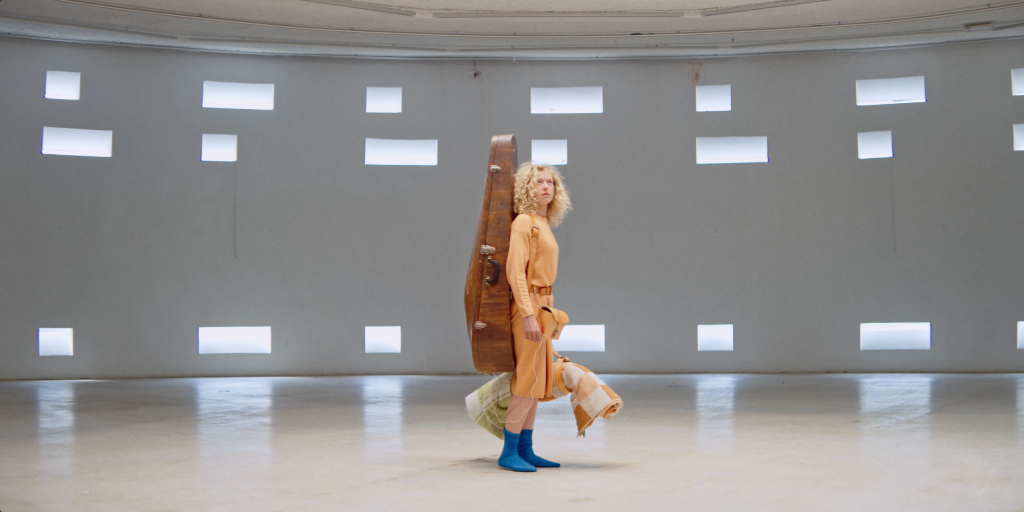
In the New Art section, LangArt is showing a new series by Maaike Fransen entitled How to Make a Living. The work comprises videos, but that does not do Fransen's work justice. She personally designed and made absolutely everything in and for the six films, which she describes as parallel realities, one-person worlds – from the clothing and sculptures to the objects you see in the films to the performance.
Maaike Fransen (1987) graduated from the Design Academy in Eindhoven and earned a Master’s degree from the Sandberg Institute. Fransen is a multidisciplinary artist who dreams with her hands. Her work balances along the interface between fashion, design, performance and film. Using found materials as her starting point, she creates hybrid objects that balance between tools and autonomous sculptures and are often based on the human body.
What will you be showing at Art Rotterdam?
I am presenting a series of six films entitled How to Make a Living, including some of the two- and three-dimensional works from those films and a live performance in space.
In the series of films, different ideas and disciplines come together in what you might describe as absurdist-surrealistic one-person worlds. By 'world' I do not mean something big or wide, but rather a highly concentrated version of it. Perhaps habitat is a better word, or 'comfort zone', which was actually the working title of the series. They are essentially scenes of a unique, mutually related and interacting whole consisting of an installation, objects, person and action.
As a spectator, every film or performance gives you a glimpse of an alternative, parallel reality in which a mysterious ritual or unusual transformation takes place. I do everything myself and am a central part of the work, though I also try to disappear into it. You might also view the films as a series of moving self-portraits, DIY self-portraits.
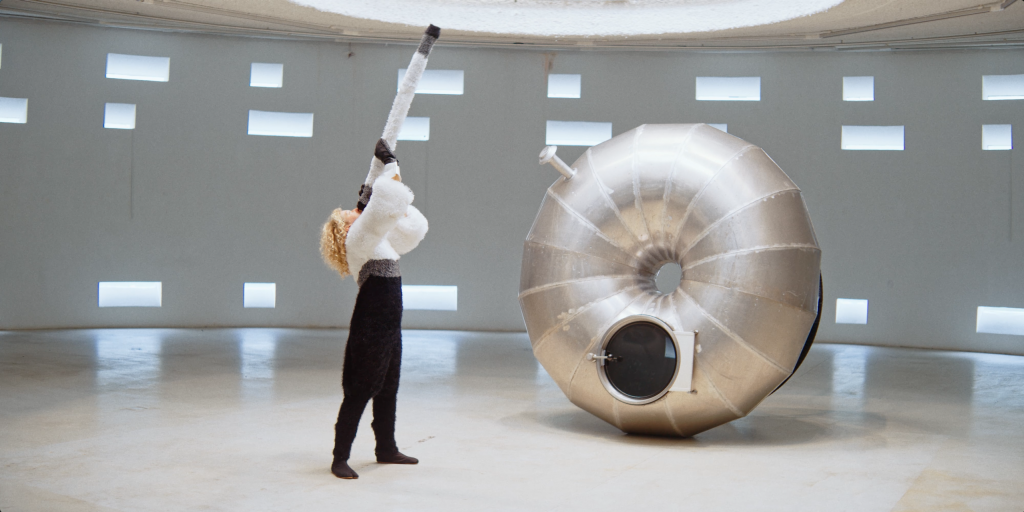
You express yourself in videos, installations, performance and through fashion. It doesn’t get any more multidisciplinary than that. Is there a common theme in the work you produce in the various media?
When I consider my work of the past ten years, the common theme is perhaps that it is not so much one main theme, but a blend. Choosing has never been my strong suit. I always try to bring (too) much together. I have become skilled at collecting and collecting: combining, assembling, fusing existing objects and materials from my imagination. Creating unexpected interfaces and connections between very different, seemingly incompatible things. Intuitively and impulsively visually associating and constructing narratives. Perhaps I'm always striving for something like synergy or magic (1+1=3). Both I do this by allowing different ideas, forms, materials and techniques to work together, and in different disciplines and media.
Making things on and around (often my own) body is also a recurring theme in my work, as is trying to solve or work with personal topics, motives or problems. I like to erase the thin line between (my) life and (my) work by making things that are in between the real and unreal, between the normal and bizarre, the possible and impossible, things that slightly bend or question the status quo.
How do you choose a medium?
I consider the framework of the work: the question or assignment from which the need or desire to make the work arises, the resources at my disposal, the context or location where the work will end up or be presented. In short, the medium is often not preconceived, but a convergence of conditions.
As long as I don't yet have a strong preference for any specific medium, I want the choice to develop during the process and feel like the most logical, natural or the most convenient and relevant one at that time. Making 'something' completely from scratch - even if the medium is fixed - does not fit my passion for collecting and compiling. I find it reassuring that I always have a find or a starting point somewhere in my studio that I can take in all kinds of directions, both imaginatively and materially.
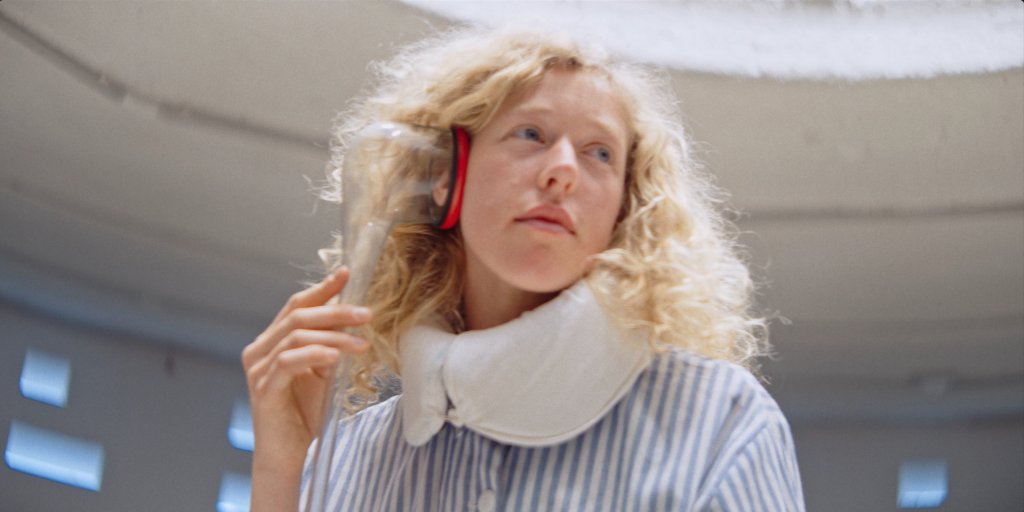
What role does the result, i.e. the films, play in your work? Is this the primary focus or is the process more important to you?
I don't consider the films that make up How to Make a Living as the result. They are certainly a result, but the installations, objects, sculptures and performance in the films stand on their own. As works of art and performances, I consider them a result. But because these films would be nothing without the things I made, and vice versa, I think the emphasis in this work is perhaps a little more on the things than on the films. And by things I mean the process, because I'm someone who comes up with an idea while working on something, and vice versa.
The work grows and evolves and slowly falls into place, or next to it. Sometimes, even after something seems finished, I continue to elaborate on it for a long time. It also happens that a work suddenly gain a new destination after being forgotten for a while. In a way, the films are an intermediate position, a snapshot. Making films or photographs helps me distance myself from the work for a while and truly see it, and then possibly finish it further. Filming is also a process in itself.
How to Make a Living consists of six short films in which the main characters have their own habitat with their own objects and rituals. Can you explain the idea behind this series?
In a literal sense, Making a Living refers to making or shaping 'a life', while figuratively it refers to 'making ends meet', supporting yourself financially. Ideally, you succeed at both and these two things smoothly coincide or emerge from each other, but in reality, at least in mine, they rub and clash and I am often confused and searching.
So, in this series, I try to do it for myself, partly fictionally and speculatively. 'Make a life' and at the same time reflect on it, fantasise about it. In some sense, these are sketches, a series of different attempts, a kind of exploration of alternatives and possibilities, as I place myself in different self-made settings. Which you could also view as abstracted jobs, functions or roles. Each work in the series tends to be subservient, useful, or at least entertaining, in order to earn its right to exist.
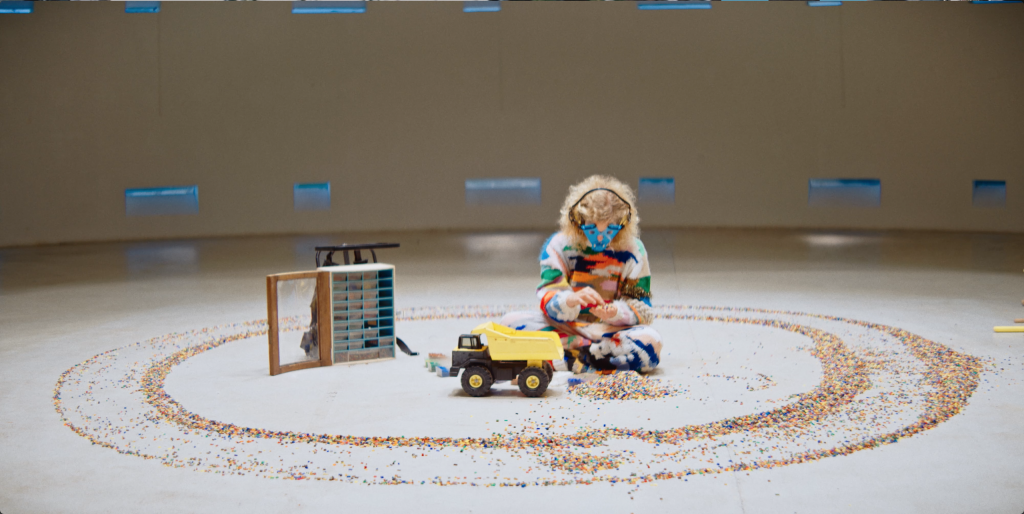
Would you consider the films an attempt to question your role as an artist in this world?
Yes, in a way I am attempting to intersect the arts with the everyday or necessary, with life and survival. In the films, I express personal wishes, dreams, desires, experiences, struggles, fears, disappointments, doubts and questions, such as: How do you live and survive in a capitalist system in which excessive value is placed on work, money and belongings? What is my place as an artist in this world? How do I keep myself alive from creativity alone, without commerce? How worth pursuing and how sustainable are individualism and self-reliance? How do you deal with alienation or loneliness? While making the series, I was recovering from a concussion. The enforced stagnation, uncertainty, worry, fatigue and limitations combined with bouts of hope and resilience from that time certainly influenced these dystopian and utopian worlds.
In that period of overstimulation and fatigue, I longed for a place of invisibility that defined peace and order, a place without all kinds of stressful and unnecessary things, where I could organise and execute things in my own way and where nothing was too much or too little. An equilibrium as it were. Yet the films are also disguised doomsday scenarios, or exit strategies. I was terrified that it would never go away and that I would become incapacitated for work with my faltering brain, that I would fall out of life and be unable to do anything. In the series, I take stock of and translate those things I was still able to do.
Apart from this personal layer, there is also a more general layer to the series: we are all born into a world that has already largely been imagined and created. How do you carve out your own place in it? What role can you play as an individual and to what extent do you have the freedom to shape that role and your own world? How can you use art and creativity for this? And how can you make a living from that without putting your work at the service of mass production and mass consumption.
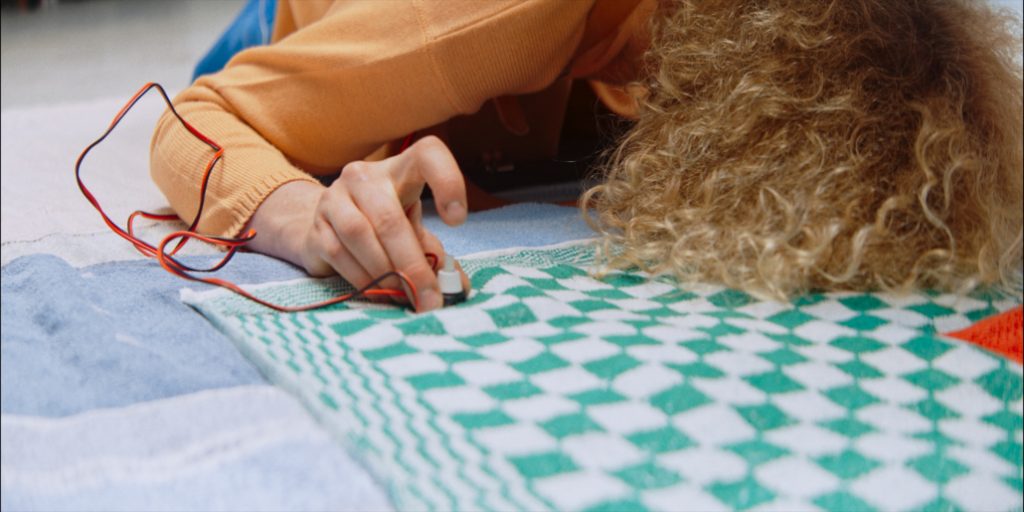
From the very start of your career, for example in an early work like I-hat (2010), the tone of your work has been absurdist, playful and light. How did this become your preference?
Maybe that playful, light tone developed within me because of a lack of it as a way to deal with tension, heaviness and negativity. Creativity and absurdism as an outlet and escape, or as a way to put things that are difficult or annoying into perspective and sublimate them. Humour loosens up whatever is stuck in your mind and body.
You might say I have also experienced playfulness or play as a universal language that everyone speaks, knows and validates and with which you can easily connect with another person. To be honest, I have never consciously wondered if and why this is my preference. It is not on purpose or with much effort that I often create in this way; it usually just happens naturally. I think it's my nature, a condition that suits me and makes me happy.
Geschreven door Wouter van den Eijkel


